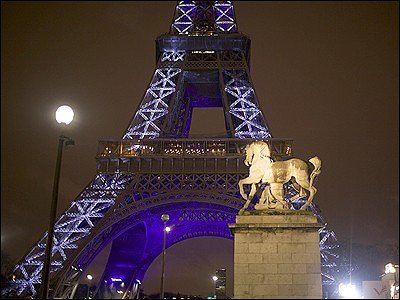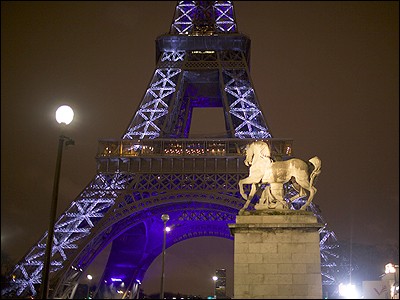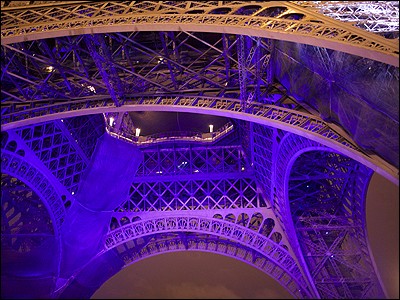The Eiffel Tower: Friend or Foe?

Tue 13 Jul 2010

© Steve Sampson
Before last Christmas, the Paris auction house Drouot celebrated with a sale it dubbed “Paris, Mon Amour.” The centerpiece was 251/2 feet of the Eiffel Tower’s staircase. This was no random stretch of iron, but part of a spiral staircase once used by Gustave Eiffel to reach his private office. Expected to fetch around $80,000, those steps sold for $154,380.However much they mock their tower, most Parisians love it. Eiffel maintained that it was purpose-built for them and created as if “formed by the wind itself.” His mighty monument has always served to commemorate; it was built not just for the Exposition Universelle in 1889 but also for that year’s centennial of the French Revolution. Its splendiferous nightly light shows started out as part of the city’s millennium celebrations in 2000.Still, what you want to know is, Is a trip to the top really worth it? After all, this is the most crowded, most visited, most photographed landmark in Paris. The answer is yes, provided you plan ahead. For costs and regulations, as well as reservations that can save you from the omnipresent queues, study the tower’s website carefully. Book online if possible, or buy elevator tickets at the guichet marked “restaurant.” Near that ticket office is the entrance for the tower restaurants and for online ticket holders. (Note: the tower does not accept Paris Museum Passes.) If you decide to go ticketless, try to arrive before 9 a.m. in the high season; then just queue until the ticket offices open. Your only alternative for spontaneity will be to arrive just before closing time. Also, avoid Tuesdays, when many museums are closed.

© Steve Sampson
If you book a table at one of the tower’s two Alain Ducasse eateries, you’ll be able to avoid the lines completely. The higher-up Jules Verne is swank and überpricey but does boast its own (free of charge) elevator. Trendier, and more affordable, is 58 Trip Eiffel, an elegant version of restauration rapide (fast food). Like that of Jules Verne, its design is by Patrick Jouin, who created numerous Paris amenities, from our sanisettes (public toilets) to the Vélib’ bicycle stands. Lunch here comes partly in a steel picnic basket. A false bridge and a glass cupola help the café blend right into the landmark structure around it. (After 5:30 p.m., it becomes a bar-café.)While the Ducasse eateries offer stylish classicism, the iconic tower itself remains eccentric. Regularly the site of stunts, performance art and even ice-skating, it is also a magnet for suicides (three or four people a year try to kill themselves at the tower) and the occasional daredevil. Historians date the first tower fatality to 1912, when a dressmaker named François Reichelt fell to his death while demonstrating a homemade parachute. Because his act was filmed by a newsreel team, Reichelt’s demise was seen by the world—a scandal as big as any later seen on YouTube.Extreme experiments at the tower continue today. On May 29, French Rollerblading champion Taig Khris set a world record by plunging 121/2 meters into a giant skateboarding ramp on the tower. Cheered on by thousands, Khris landed safely. Afterward he described the tower, sounding like so many before him, as “a place that gave me crazy dreams, then made them true.”
Tip Sheet
The best places to photograph the Eiffel Tower? From directly underneath; from the top pointing down; or from Place du Trocadero, directly across the Seine. For more tips on how to take tip-top shots of the tower, visit WhyGo.